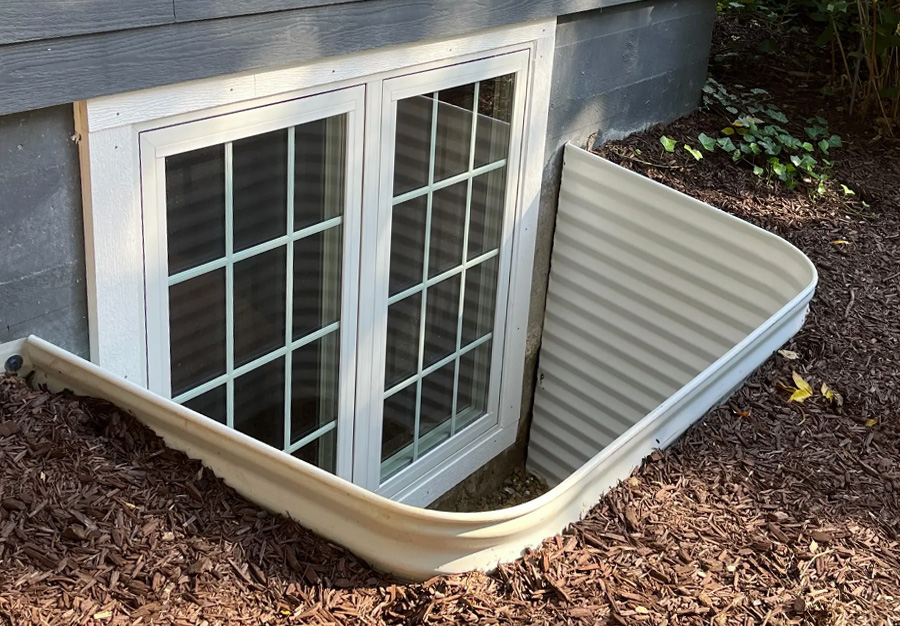
Basement window wells are one of those out-of-sight, out-of-mind areas — until they fill with leaves, mud, and bugs, or start looking like a small science experiment gone wrong. 😬 If you’re considering pressure washing them, the good news is yes — you can clean your window wells effectively with a pressure washer. But there’s a method to it, and a few precautions to keep in mind.
Let’s walk through how to pressure wash basement window wells the right way — safely, efficiently, and without flooding your basement. 💧🏠
🌧️ Why Window Wells Need Cleaning
Basement window wells are designed to keep soil, water, and debris away from your basement windows while still letting in natural light. Over time, they collect:
- Fallen leaves 🍂
- Mud and runoff
- Cobwebs and insects 🕷️
- Small critters (sometimes) 🐸
- Mildew or algae growth
If not maintained, they can become a breeding ground for pests, or even lead to water pooling that seeps into your basement.
⚠️ Precautions Before You Begin
Before blasting away with your pressure washer, stop and consider these key precautions:
✅ Check for drainage: Make sure your window well has a functioning drain or gravel base that allows water to seep into the ground. A clogged or poorly designed well can flood with water during cleaning.
✅ Seal your window: Your basement window should be fully sealed and in good condition. If the window or caulking is old or damaged, pressure washing could force water into your basement.
✅ Use a low-pressure nozzle: High PSI near glass can crack or damage the window. Stick with a 40° wide spray tip for gentle cleaning.
✅ Cover electrical: If any outlets or wiring are nearby, protect them with waterproof covers or avoid pressure washing in that direction.
Browse Amazon Here For Top Rated Power Washers And Accessories
🧽 Step-by-Step: How to Pressure Wash a Basement Window Well
1. Clear Out Loose Debris First
Before using your pressure washer, manually remove leaves, trash, and any large debris. A small garden rake or gloved hands work well.
2. Protect Your Windows
If you’re not confident in the seal of your window, place a waterproof barrier like plastic sheeting or painter’s film over it — secured with waterproof tape.
3. Choose the Right Nozzle
Attach a 40° white nozzle to your pressure washer. If you have a soft-wash attachment, that’s even better. This reduces the chance of water intrusion or surface damage.
4. Test a Small Area
Begin by testing a small area of the window well to make sure water isn’t leaking into your basement. Check inside your basement immediately after the test.
5. Spray Down the Walls First
Spray from top to bottom to loosen and wash away dirt, mud, mildew, or algae from the metal or concrete walls.
6. Blast the Base
Once the sides are clean, aim the nozzle downward to flush out the gravel or drain base. This helps remove gunk and sediment buildup.
7. Rinse Thoroughly
Finish with a clean rinse pass, ensuring any detergent or loosened debris is completely cleared.
🌿 Optional: Use a Mild Cleaner
For stuck-on grime or mildew, consider applying a biodegradable detergent or a vinegar-water solution before rinsing. Avoid harsh chemicals that can seep into soil or affect plants nearby. Look for pressure washer-safe detergents marked environmentally friendly. ♻️
Let the cleaner dwell for 5–10 minutes before rinsing — but never let it dry completely, as that can leave streaks or residue.
Browse Amazon Here For Biodegradable Pressure Washing Detergents
💡 Pro Tips
✅ Work on a dry, sunny day so any excess water evaporates quickly
✅ Angle your spray slightly downward to avoid splashing water into the window
✅ Use a wet/dry vacuum to remove remaining puddles or silt
✅ Clean window wells at least twice a year — spring and fall are best
✅ If your well doesn’t drain well, consider adding more gravel or installing a drain tile
🚫 Mistakes to Avoid
❌ Don’t use a 0° or 15° nozzle — they’re too powerful for delicate spots
❌ Don’t pressure wash a cracked or old window — it may break or leak
❌ Don’t skip the manual cleaning phase — pressure washing won’t remove large debris
❌ Don’t assume the water will always drain — double-check your drainage system beforehand
🧠 Final Thoughts
Cleaning your exterior basement window wells with a pressure washer is totally doable — and it’s a quick way to keep your home looking sharp and running dry. Just make sure you go in prepared: low pressure, proper drainage, and a steady hand make all the difference.
Once cleaned, you’ll enjoy more light in your basement, less mildew smell, and one less headache during the next big rainstorm. 🌦️🧼
Browse Amazon Here For Top Rated Power Washers And Accessories






